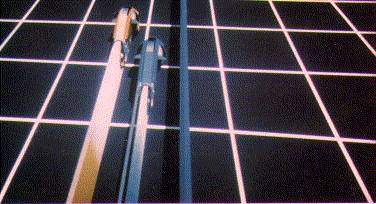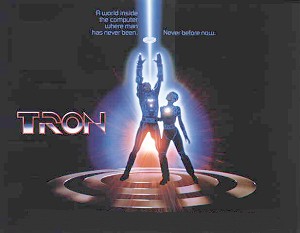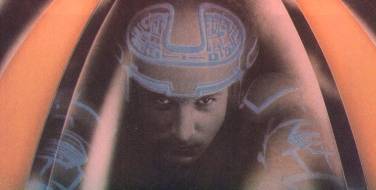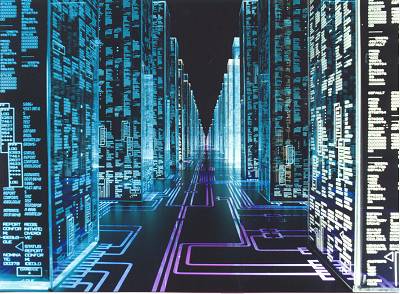| Topology | Info Maps | Info Landscapes | Info Spaces | ISP Maps | Web Site Maps | Surf Maps | Historical ]

| The conceptions and representations of Cyberspace created by artists in literature, art, computer games, films and television have a powerful influence on how we perceive these new spaces. |
| William Gibson's evocative and oft-quoted description of Cyberspace. The one that started it all in many respects: |
| "Cyberspace. A consensual hallucination experienced daily by billions of legitimate operators, in every nation, by children being taught mathematical concepts...A graphical representation of data abstracted from the banks of every computer in the human system. Unthinkable complexity. Lines of light ranged in the non-space of the mind, clusters and constellations of data. Like city lights, receding..." (William Gibson, "Neuromancer", 1984, page 51) |
| Neal Stephenson's vividly imagined virtual reality world of the Metaverse: |
| "It is the Broadway, the Champs Élyseés of the Metaverse. It is the brilliantly lit boulevard .... The dimensions of the Street are fixed by a protocol, hammered out by the computer graphics ninja overlords of the Association for Computing Machinery's Global Multimedia Group... Like any place in Reality, the Street is subject to development. Developers can build their own small streets feeding off of the main one. They can build buildings, parks, signs, as well as things that do not exist in Reality, such as vast hovering overhead light shows and special neighborhoods where the rules of three-dimensional spacetime are ignored. Put a sign or a building on the Street and the hundred million richest, hippest, best-connected people on the earth will see it every day of their lives." (Neal Stephenson, "Snow Crash", 1992, pages 24-25) |


|
The film Tron, made in 1982, pioneered the use of computer generated special effects and also provided influential representations of virtual space within a computer. Particularly memorable was the light bike chases shown in the image above and below. The film was made by Walt Disney Pictures and was directed by Steven Lisberger and starred Jeff Bridges and Bruce Boxleitner. See The Tron Page by Guy Gordon for more information. |

| Johnny Mnemonic was scripted by William Gibson himself, from one of his short stories. It was released by Tristar Pictures in 1995, directed by Robert Longo and starring Keanu Reeves, Dina Meyer and Ice-T. |
 (Image courtesy ofC.O.R.E. Digital Picture.) |
|
There were three major sequences in the film visualising Cyberspace and these were created by different special effects companies. The "Internet navigation" sequence was created by Sony Pictures Imageworks, the "Digital Dream" sequence was by Braid Media Arts. Lastly, the "Data Upload" sequence was created by C.O.R.E. Digital Pictures. The striking image above is taken from their work, visualising loading vast volumes of data into Cyberspace. Film reviews of Johnny Mnemonic are listed at the The Linköping Science Fiction & Fantasy Archive. An article by Artie Romero called "Hollywood Goes Cyberpunk" give more details on Braid Media Arts work on visualising Cyberspace in the film. While Steve Napleton's academic paper, "Johnny Mnemonic: Cyberspace and the Displacement of Digital Anxiety in Hollywood Cinema" provides a detailed analysis of the film. | |
|
The 1995 film Hackers, directed by Iain Softley and starring Jonny Lee Miller and Angelina Jolie. The key Cyberspace representation in the film was the "City of Text" dataspace. This was visualised as a Gibsonian urban landscape of skyscrapers of pulsing information and computer circuitry, as shown by the image below. It was created by Artem Visual Effects, based in London.
There is also anofficial Hackers site. |
